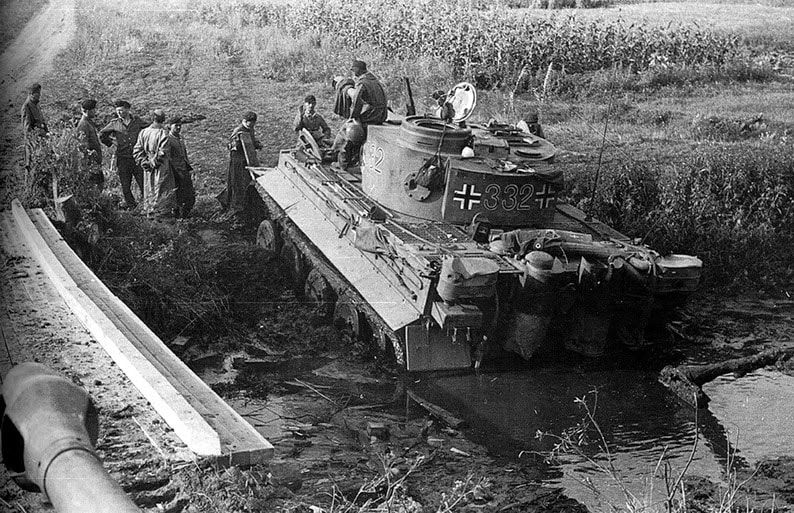I think Japan still would have invaded the Soviet Union though, if the Second Sino-Japanese War continued (the oil embargo only really happened once they invaded Indochina).
Other than that I agree with you. That would be curious alternate reality.
Damaged Japanese Heavy Cruiser Myōkō in Singapore four days after surrendering to Royal Navy units, tied up alongside are the submarines I-501 (ex U-181) and I-502 (ex U-862) - September 25, 1945
Myōkō had part of her stern blown off during a torpedo attack by the submarine USS Bergall SS-320 on December 13, 1944. With only one operating propeller and no steering she was towed to Singapore, however there were insufficient materials for the repairs and Myōkō was utilized as a floating anti-aircraft battery until the end of the war.
Kriegsmarine U-Boats U-181 & U-862 had been part of the “Monsun Gruppe” operating from Penang in the Indian Ocean. In May 1945 both were in Singapore Harbor where they were seized by the Japanese due to Germany’s surrender and re-designated I-501 (U-181) & I-502 (U-862).
Myōkō, I-501/U-181, and I-502/U-862 were towed to the Strait of Malacca in 1946 and scuttled off of Port Swettenham, Malaya (near present-day Port Klang, Malaysia).
IWM - Trusler, C (Lt) Photographer
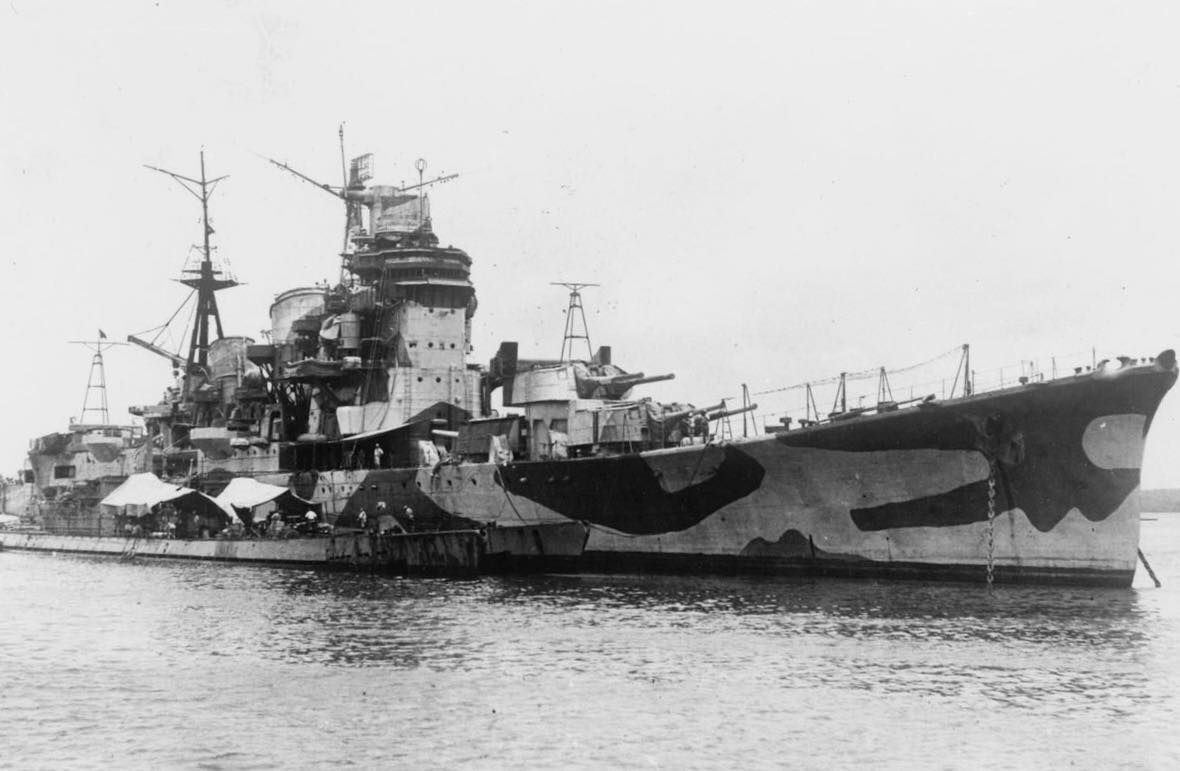
Good to know.
British Sexton SPGs of the 11th Armoured Division pass through Deurne during the advance towards Gemert in the Netherlands - September 26, 1944
IWM - Laing (Sgt) Photographer
IWM B 10363
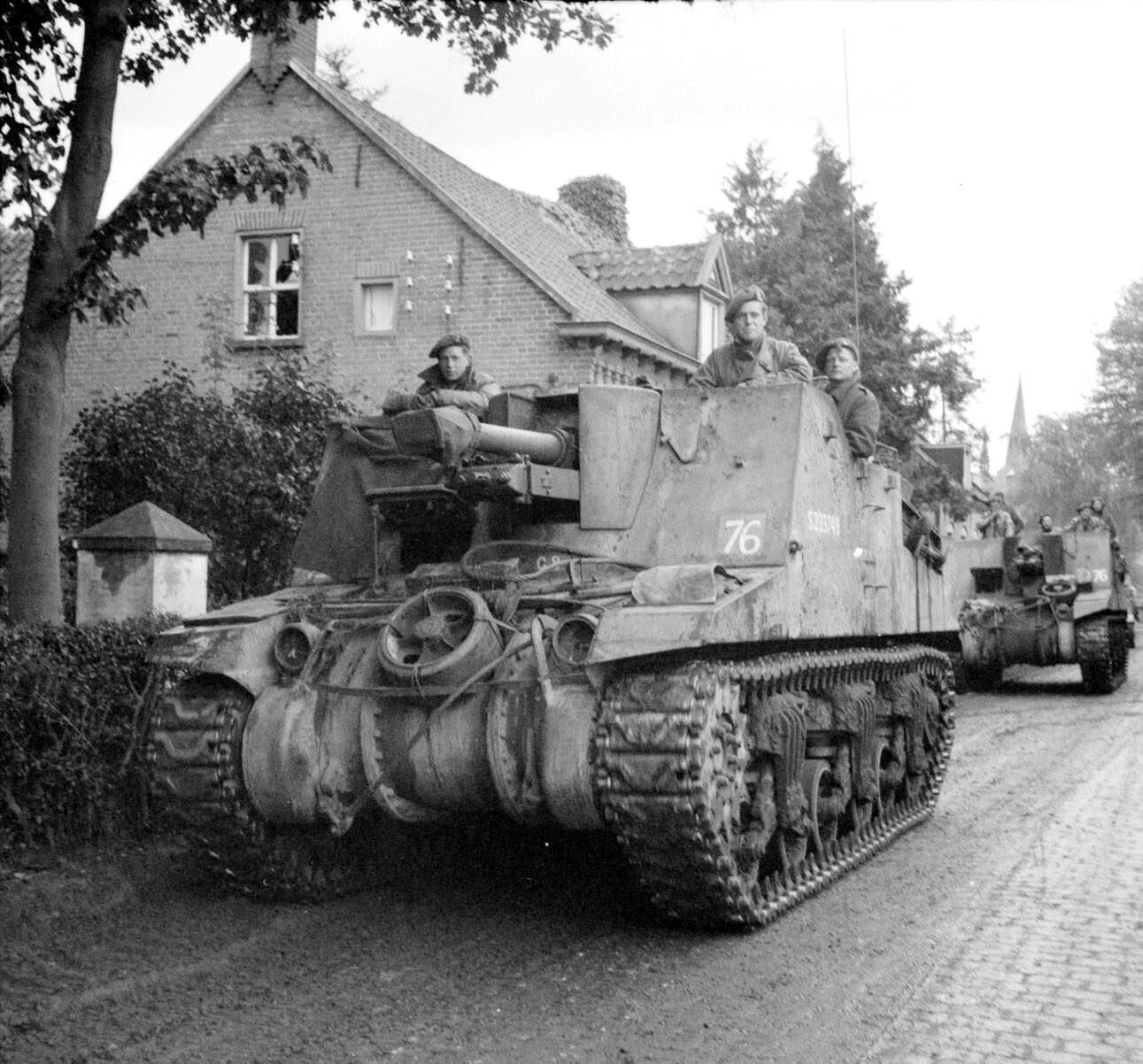
British Sherman Vs (M4A4s) of the 3rd Royal Tank Regiment, 11th Armoured Division, advance through Deurne, Netherlands - September 26, 1944
IWM - Laing (Sgt) Photographer
IWM B 10359
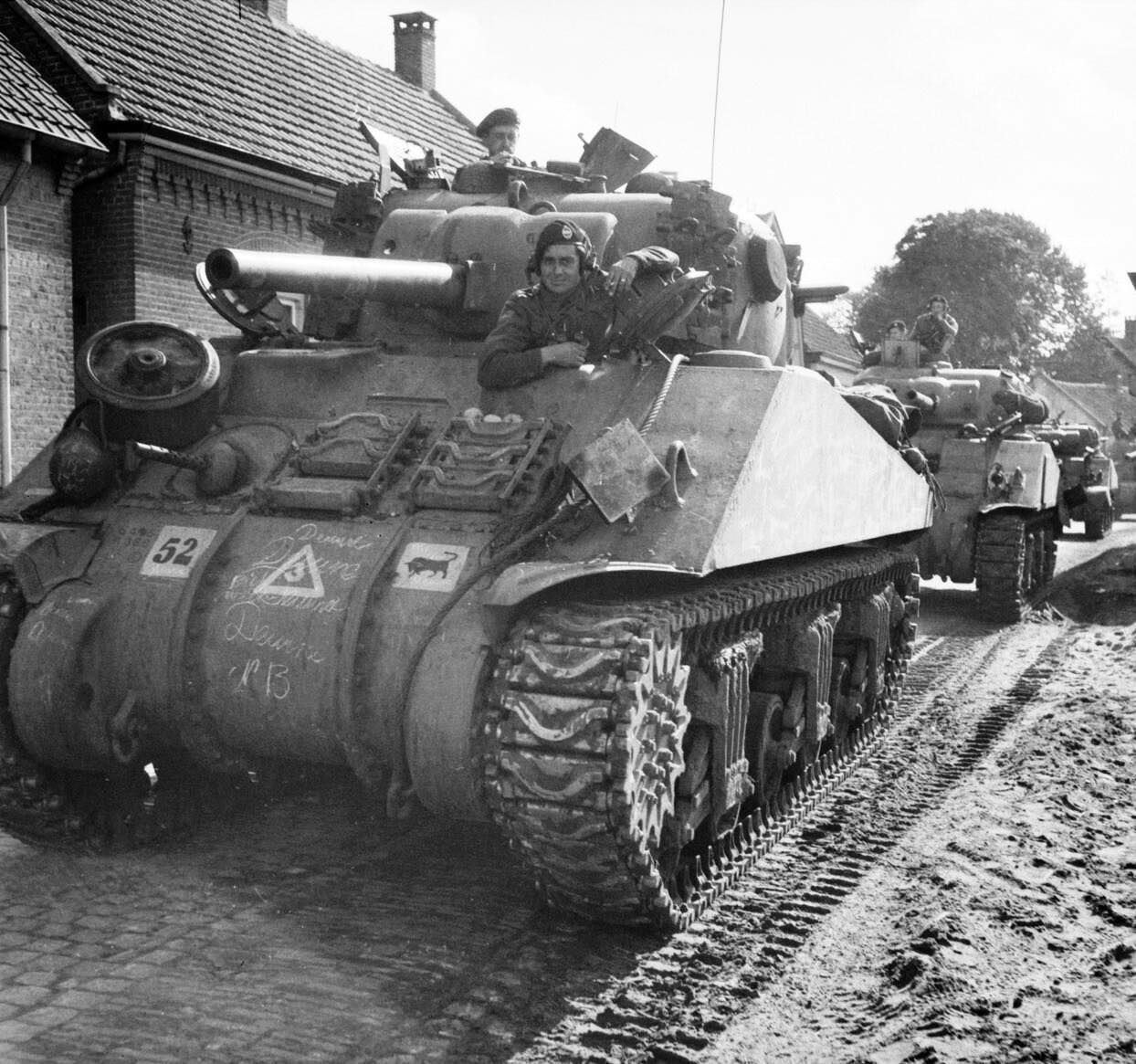
Sherman Firefly IC Hybrid leads Sherman Vs (M4A4s) of the British 11th Armoured Division during the advance towards Gemert, Netherlands - September 26, 1944
The “Hybrid” designation was British nomenclature for a composite Sherman hull (cast front, welded rear), a “C” at the end of the Roman numeral indicated a Firefly conversion equipped with the 17-pdr.
IWM - Laing (Sgt) Photographer
IWM B 10358

yea longer barrel for the Firefly. More accurate. Better range
In my opinion, also better-looking.
Three British Humber armored cars of 8th Army Tactical HQ’s Defense Company await the order to move out in Italy - September 27, 1944
IWM - Gade, Richard Felix (Captain) Photographer
IWM NA 19104
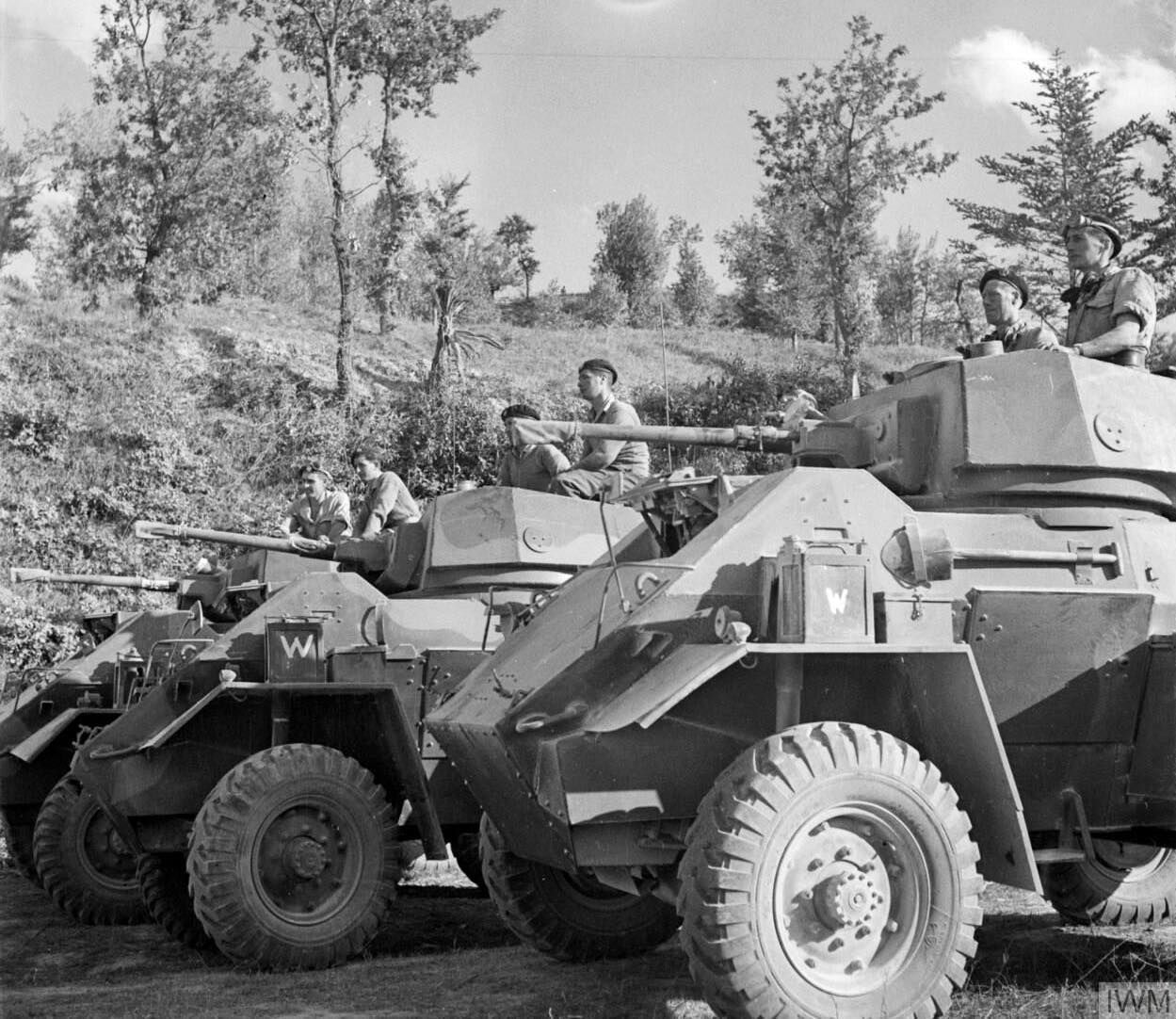
British Priest 105mm SPG of the 6th Armoured Division near the top of the Muraglione Pass between San Godenzo and San Benedetto in Italy - September 27, 1944
IWM - Hunter (Sgt) Photographer
IWM NA 19040
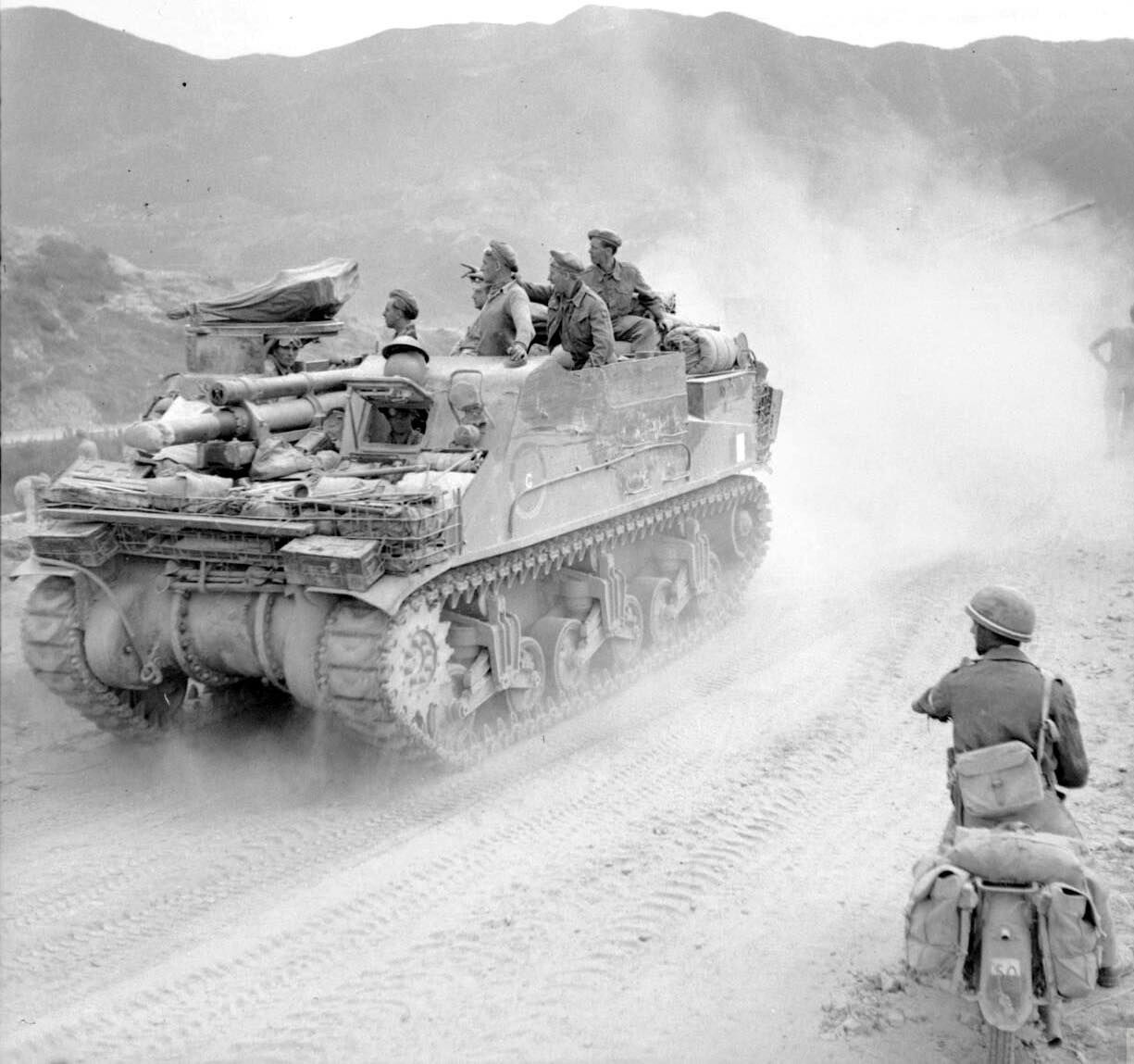
The three Army Film and Photographic Unit
Photographers who took the graphic still and cine pictures of the 1st Airborne Division at Arnhem. The picture, which shows them with their cameras, was taken at the AFPU Centre at Pinewood Studios, Iver Heath, Buckinghamshire on 28 September 1944, the day that they arrived back. Smith was wounded in the shoulder. Left to right: Sgt. Dennis M Smith, Sgt.
Gordon “Jock” Walker and Sgt. C M “Mike” Lewis.
(Photo source - © IWM BU 1169)
Barker, Jack E. (Lieutenant)
Army Film and Photographic Unit
(Colorised by Erwin Zeemering) See less

The German battleship Bismarck, in Kiel in late September 1940
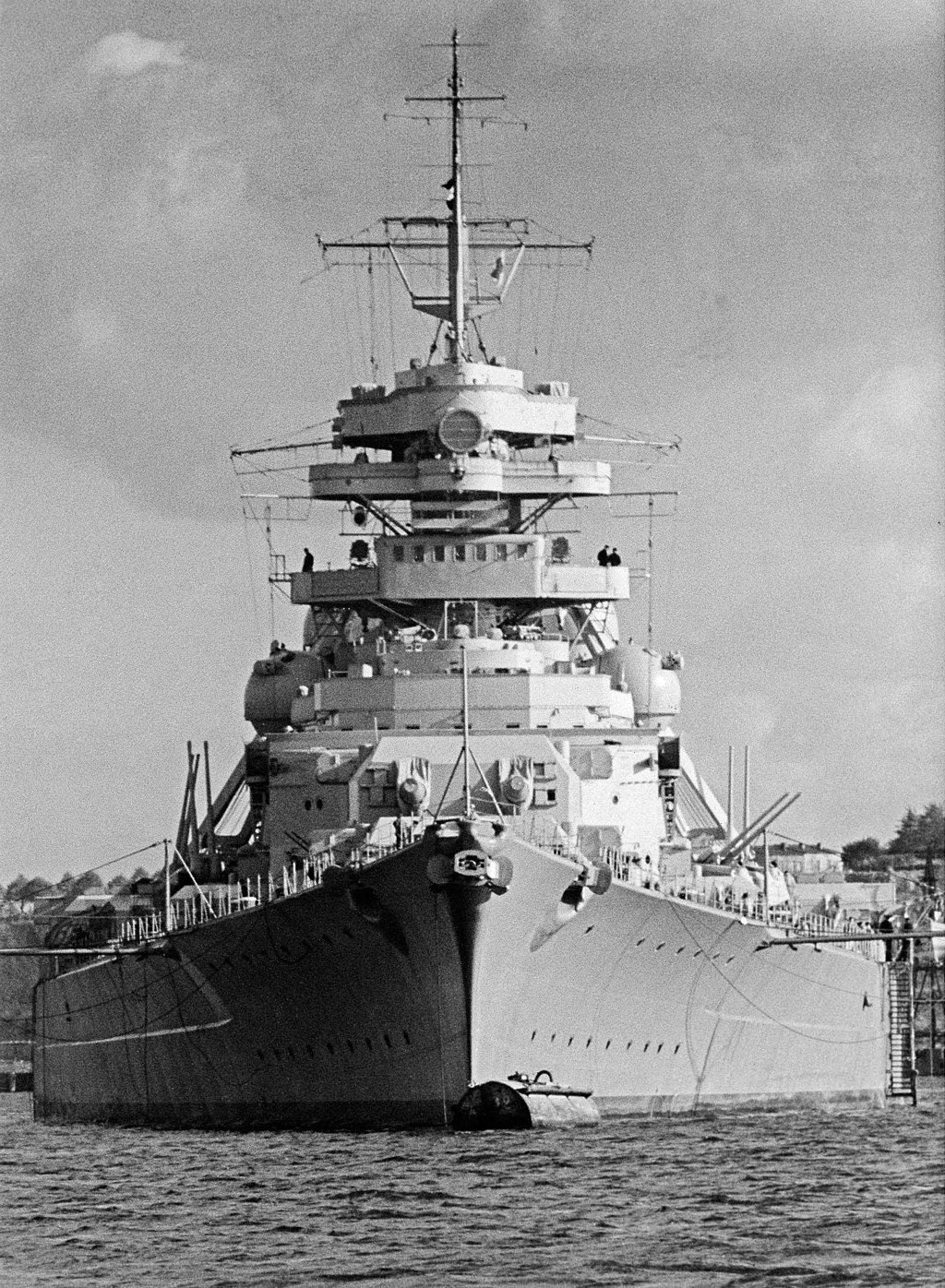
@captainwalker beautiful.
US 3rd Armored Division 75mm Sherman Tanks being used as artillery near Stolberg Germany area - September 29, 1944
LIFE Magazine Archives - John Florea Photographer WWP-PD

Cool!
Nice! Color pictures!
Tiger I A02 from III./Panzer Regiment Grossdeutschland Division on the Eastern Front in October 1943
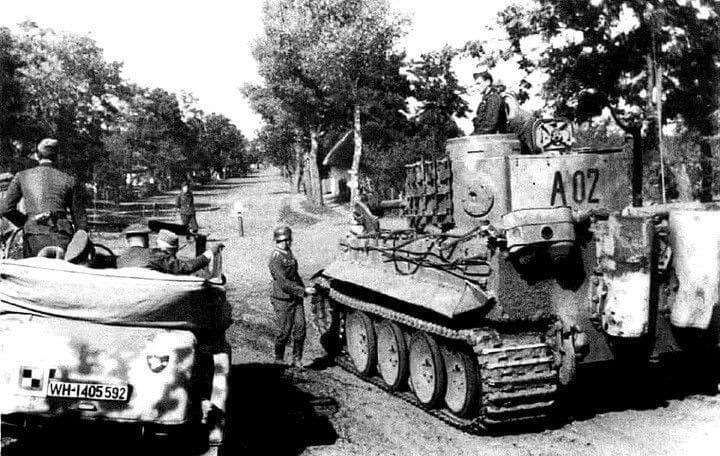
Still Missing in Action…
USAAF Major Sherman Beaty of the 386th Bomb Group, with his B-26B Marauder 41-31613 “Son of Satan” at RAF Great Dunmow - September 30, 1943
Sherman Randolph Beaty was born on October 17, 1916 in Wayne County, Missouri. He served in the USAAF & USAF during WW2 & Korea.
On April 1, 1953, while on a night intruder mission, his aircraft was hit by AA fire and crashed in North Korea. Beaty was listed as Missing in Action and his remains have never been recovered.
Sherman Randolph Beaty is memorialized at the National Korean War Veterans Memorial in
Washington DC.
“Son of Satan” was lost on November 18, 1944 when hit by flak and crashed near Mörschied Germany, Beaty does not appear to of been onboard when this occurred.
Keystone Press Photographer
IWM FRE 2236 See less
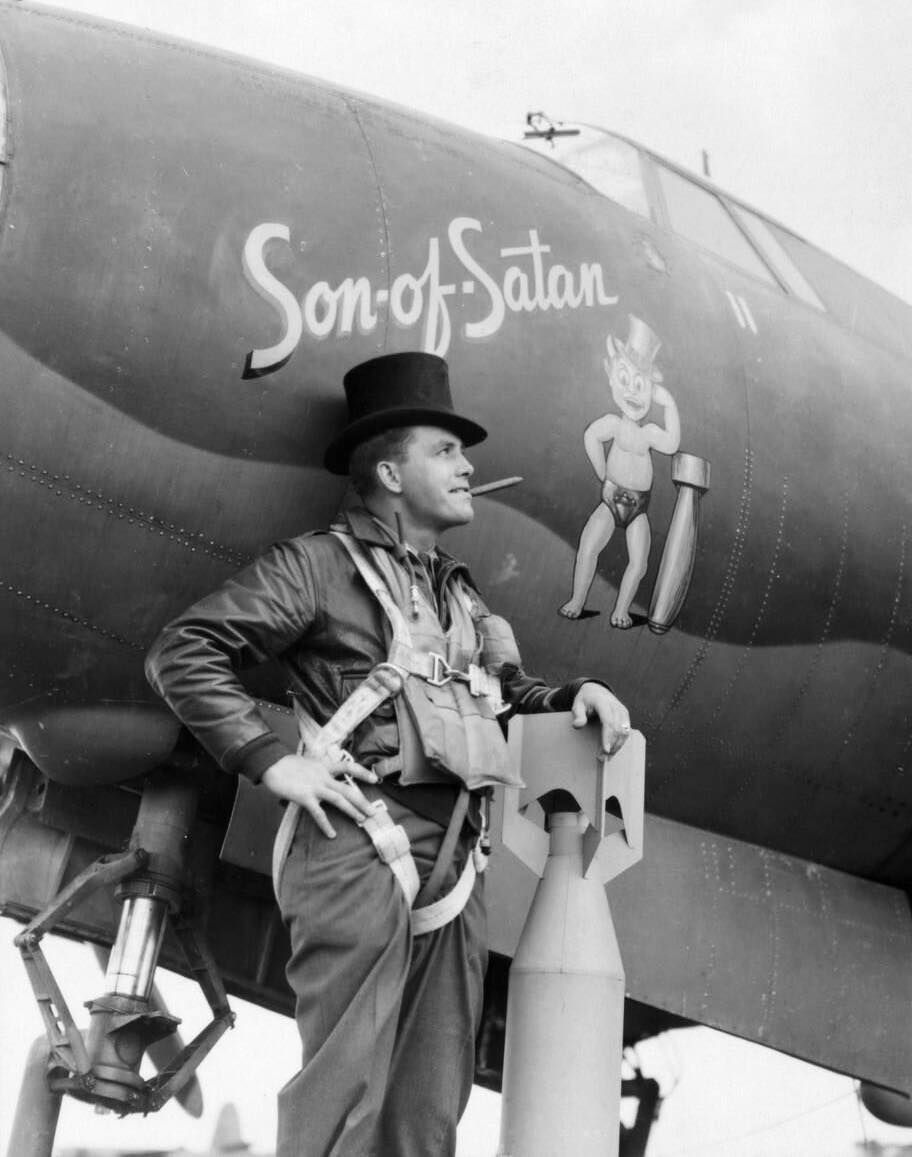
Finnish Lt Esa Seesta and a USA volunteer 2nd Lt with captured Soviet PPD-34 SMGs near Koivisto Municipality, Finland - September 30, 1941
When the Winter War broke out, many Finnish immigrants in the USA & Canada traveled to Finland to join Finland’s armed forces.
Koivisto is now Primorsk in the Leningrad Oblast Russia
SA-Kuva - Sa-Picture 54382 - Lauri Bacon Photographer

A bit late, but October 2 was the 80th anniversary of the end of the Warsaw Uprising. On this day the Polish insurgents surrendered to the German army
A major rebellion in Warsaw by the Polish Home Army, it was launched in late August 1944 as the Soviets approached very close to Warsaw. Despite the Poles counting on Soviet help (having informed them in advance), little help was given (for disputed reasons), even from the First Polish Army fighting with the Soviets.
I always wonder what would’ve happened had the Soviets put all of their effort towards liberating Warsaw instead of clearing out the Balkans during August-September 1944 and leaving them out to be destroyed by the Germans.
Or even crazier, what if the Allies, foregoing Market Garden, used Soviet airfields to send the entire First Airborne Army to help out the partisans?
October 4 1943: Panzerkampfwagen VI ‘Tiger’, Ausf. E, Sd.Kfz. 181,
#332 of 3./Schwere Panzer-Abteilung 503 (3./s.Pz.Abt.503), stuck in the mud on the banks of a river near the town of Znamenka, Tambovskaya oblast, Soviet Union.
In October 1943, the battalion was in a rest area near Znamenka, where it had time to maintain and repair vehicles and conduct training.
